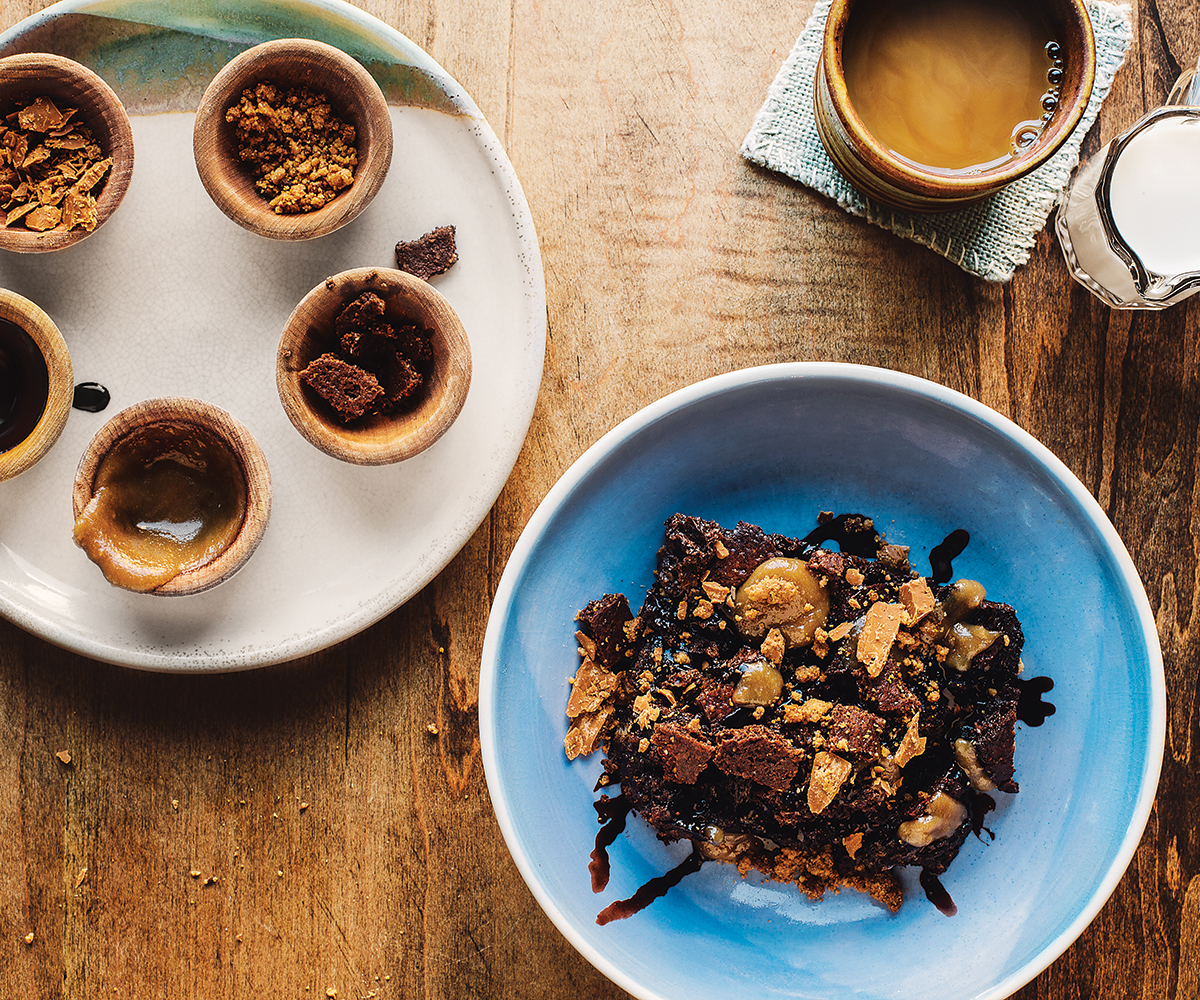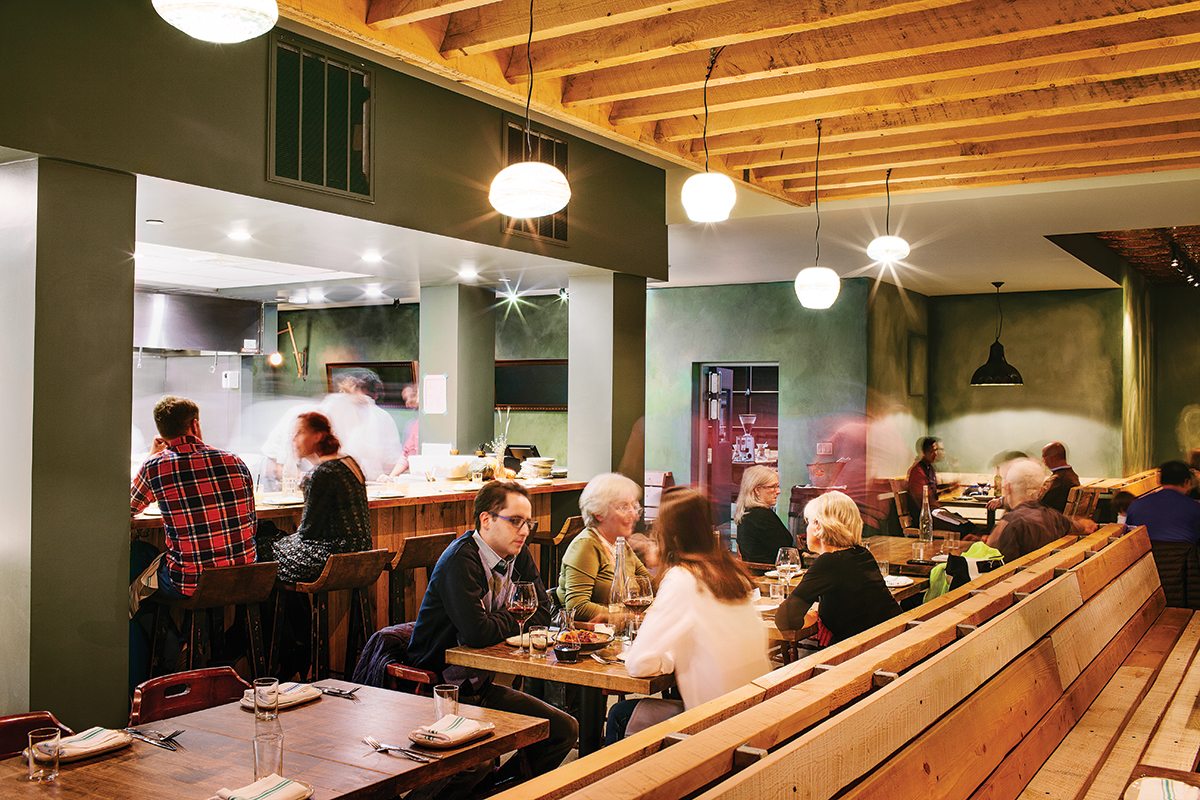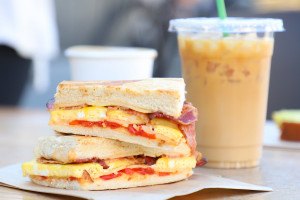Restaurant Review: Loyal Nine

Lobster is braised in mead and hickory nuts. / Photograph by Adam Detour
Right now, Boston’s braver chefs are in the process of reinventing New England’s culinary vernacular. They’re doing this by tapping into historical cooking approaches, inserting them in a kaleidoscope, and seeing what shakes out. It’s a trend that was jumpstarted by Kitchen, a quirky South End spot that took inspirations from sources as disparate as Gilded Age New York, Fannie Farmer, and Julia Child, with a dash of Ye Olde England thrown in for good measure. Kitchen improbably survived, mostly by reducing its emphasis on historical oddities and concentrating on simple New England fare.
I call these chefs “brave” because restaurants based on this approach often don’t become smashing successes. Long ago, Colony offered historical fare in a brass-chandeliered Back Bay room, but diners dismissed it as a stuffy, foodier Sturbridge Village. Thirty years later, chef-owner Marc Sheehan, at Loyal Nine, is dusting the mothballs off ancient cookbooks that have held his fascination since his college years. Whether he can summon food that’s tasty, rather than just an academic exercise, is the real question. Because no matter how much you love history, you run into trouble when you try to make people eat it.
There are no indications of Sheehan’s thesis in the interior design of his East Cambridge space. You won’t find a cute curio cabinet of Olde New England, à la Puritan & Company, nor a shelf of aging cookbooks, à la Kitchen; nothing, really, except Windsor chairs that look like college-dining-hall discards.

A sourdough chocolate brewis is accompanied by toppings like buckwheat crumble and smoked-vanilla-bean toffee. / Photograph by Adam Detour
Instead, Loyal Nine looks simply unfinished—a big, bare gray room that makes you wonder if the owners were forced to open before they could finish painting. That said, there is an attractive open kitchen, and a long bar where bar manager Fred Yarm mixes shrubs and home-brewed herbal essences for Madeira and rum-based tipples, seemingly the new must-haves for every self-respecting cocktail geek. The food tends to be uneven, but there’s real magic to be found as well.
Sheehan’s strength is in what I call the lumbersexual arts—foraging, fermenting, and pickling—crazes that here feel utterly appropriate. Sheehan also makes inventive use of underutilized native seafood, like periwinkle and whelks, and herbs such as anise hyssop—which he grows on the patio garden. He handles local crops such as cattle beans with the same imagination and skill that he learned while working in the kitchens of New York’s Blue Hill at Stone Barns. Another must try: the startlingly good bread, like the house-seeded rye with caraway and fennel, from pastry chef Adam Ross, who immediately vaults into the running for Boston’s best baker.
When Ross’s bread program meets Sheehan’s deep-seated New England roots, you get magic, as in Loyal Nine’s “soused” bluefish on brown bread ($9), named for a traditional way of preserving fish in vinegar that results in lighter and less salty fare than a full-bodied pickle brine. Inspired by a lunch-box snack of cream cheese on brown bread, Sheehan’s souse—spiked with house-cultured cream and horseradish—is actually more akin to a brightly flavored ceviche.

An attractive open kitchen looks out onto the stark dining room. / Photograph by Adam Detour
The “with hands” section of the menu includes skippable oddities like “sallet” (the historical English spelling for lettuces) packets ($7), spring rolls by way of Colonial Boston that come stuffed with roasted kohlrabi and goat cheese. The Scituate sea beans ($6) make use of a wild seaweed familiar to the chef, who grew up in Milton and did his best fishing and foraging in Scituate. He grills it on the flat-top and serves the branches whole, leaving you to strip them with your teeth—an amusing distraction, but one that felt a little too close to eating like an actual Pilgrim.
Some of Sheehan’s small bites are irresistible. Deep-fried Jacob’s cattle beans dusted with herbs and sea salt ($5) are as addictive as popcorn. Ditto for the salt-and-vinegar chips ($6), dark brown, salt-crisped, and served with a garlicky smoked fish mousse for dipping.
None of the mains measures up to those snacks, though there are occasional flashes of light. Sheehan’s brisket ($20), which is fermented overnight and then confited in pork and beef tallow, is sadly not one of those flashes. It turned out to be a terrible idea, the beef turning into nubs of gamy, soft fat, like the gristly ends of a sirloin. Roast chicken ($22) was mealy and dry. Its only saving grace was a side of creamed celery that was braised in vegetable stock, thickened with celery purée, and had some real depth of flavor. You could base an entire Thanksgiving feast around that celery.
The main course that most successfully pulled off Sheehan’s brand of “East Coast Revival” was braised lobster with hickory nuts and mead (two portion sizes, $18 and $35). All of the ingredients, including the buttery base, would be at home in a Beacon Hill drawing room of 150 or even 200 years ago. Hickory nuts are tough to crack, and even harder to pick out of the shells, but the nutmeats are soft and sweet, like tamed walnuts. Paired with fermented honey wine, they made for a subtly flavored, elegant counterpart to the inherently sweet lobster—-something I imagine discriminating patriots would have appreciated after a long day’s plotting.
And if the celery could take pride of place at the Thanksgiving table, the fried clams in the pig-ear salad ($14) could make a whole restaurant. The surrounding components—an agreeable, not-so-bitter “bitter green relish” and pig ear, something that always strikes me as plasticine, barely edible cartilage—were blown away by the greaseless, meaty clams. That Scituate foraging and New England childhood show in Sheehan’s way with seafood.
Desserts wander too far into the curiosity camp, like “brewis,” a sourdough bread pudding that was saved by a touch of chocolate and the little cups of sauces and toppings it was served with for DIY fun (an expensive sundae at $13). Brown-bread ice cream with summer-berry grunt ($10) was pasty and bland; poached peach with cultured cream ice cream and lemon verbena ($7) was herbal and sour, the way Colonial food can often come across to modern palates.
Sheehan should concentrate on the simpler moments, gently wielding his homemade honey wine and vinegars and historical herbs—which together make a case for a brief look backward. Ross’s bread and Sheehan’s way with a fry basket make me think that Loyal Nine’s next evolution will be a good one—even if it isn’t quite a revolution.
Menu Highlights
Soused bluefish, $9
Fried soldier beans, $5
Fried-clam and pig-ear salad, $14
Braised lobster, $18/$35
Sourdough chocolate brewis, $13
660 Cambridge St., Cambridge, 617-945-2576, loyalninecambridge.com.
Critic Corby Kummer—an editor at the Atlantic and author of The Pleasures of Slow Food—has been reviewing Greater Boston’s top restaurants in our pages since 1997.


